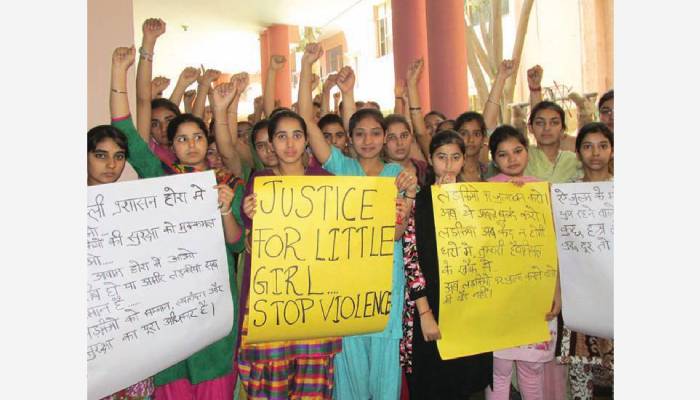
or

Studying the law that governs us and everything around us brings about a sense of inquisitiveness in me. Before I started studying law, reading about crimes such as rape or murder was something I avoided since it brought about a sense of fear and anxiety. Over the last year, the media has brought into focus more incidences of rape than ever before.
As a student of law, I understand that there is no magic formula to deal with sexual offences such as rape but there is a certain mindset, a stereotype that the victim is at fault. And we see this going back into time and re-visiting the infamous Mathura case where a 16-year-old girl was raped by two policemen in the police station compound in Chandrapur district of Maharashtra, which led to huge public outcry and eventually led to amendments in Indian rape law. The open letter written by UpendraBaxi to the Supreme Court highlighted a very crucial aspect — the worthiness of the policemen who are here to protect us. They are our caretakers but how are we supposed to entrust them with our lives after reading this case?
This brought about a movement in our country, which was followed by people moving out to the streets and howls of angry protests for women’s rights and safety. There were a number of women groups that were formed. The first feminist group in India against rape was created known as “Forum Against Oppression of Women” (FAOW).
Moving on to something more recent, the Delhi gang rape case where a 23-year-old girl, beaten and raped by six men. The woman died 13 days later due to her severe injuries. This case revolutionized the idea of raising your voice for a cause. People fearlessly voiced pain, anguish and agony. They began to fight for justice. In the aftermath of the gang rape, the Justice Verma committee was formed with the task of reforming and invigorating anti-rape law. The report received 80,000 recommendations from people from all spheres of life. This eventually led to the passing of the 2013 Amendment.
Statistics is what we read in the newspaper and magazines and numbers from these statistics are used to build important policy arguments but what happens when these same statistics are under-reported since the crime with the greater penalty is recorded. For the Delhi gang rape case, the offence recorded is murder and not rape because murder carries a greater penalty.
Conclusively, the question I want to raise is, are movements the only way to bring about an amendment? Why do we have to wait for horrendous cases like Mathura and the Delhi gang rape case to bring about a change in law?
It’s time to reflect on our system and take a pro-active stance to ensure we render justice irrespective of the type and intensity of crime. People have to fight for what they believe in. Women cannot be locked up away in houses and hope that someday the streets will be safe.

Lex Witness Bureau

Lex Witness Bureau

Lex Witness Bureau

For over 10 years, since its inception in 2009 as a monthly, Lex Witness has become India’s most credible platform for the legal luminaries to opine, comment and share their views. more...
Connect Us:


The Grand Masters - A Corporate Counsel Legal Best Practices Summit Series
www.grandmasters.in | 8 Years & Counting
The Real Estate & Construction Legal Summit
www.rcls.in | 8 Years & Counting
The Information Technology Legal Summit
www.itlegalsummit.com | 8 Years & Counting
The Banking & Finance Legal Summit
www.bfls.in | 8 Years & Counting
The Media, Advertising and Entertainment Legal Summit
www.maels.in | 8 Years & Counting
The Pharma Legal & Compliance Summit
www.plcs.co.in | 8 Years & Counting
We at Lex Witness strategically assist firms in reaching out to the relevant audience sets through various knowledge sharing initiatives. Here are some more info decks for you to know us better.
Copyright © 2020 Lex Witness - India's 1st Magazine on Legal & Corporate Affairs Rights of Admission Reserved